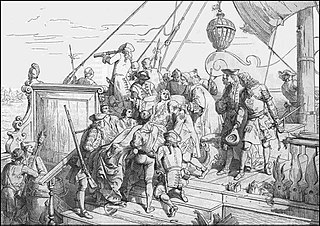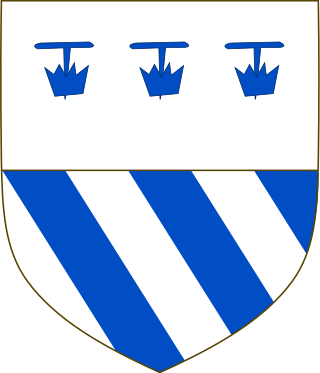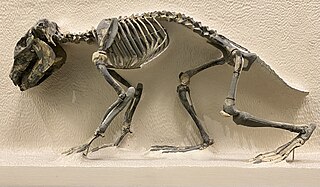

The Palazzo Garzoni is Gothic-style palace located on the Grand Canal, in the Sestieri of San Marco, adjacent to the Fondaco Marcello, in Venice, Italy.


The Palazzo Garzoni is Gothic-style palace located on the Grand Canal, in the Sestieri of San Marco, adjacent to the Fondaco Marcello, in Venice, Italy.
The palace was erected in the 15th century. The aristocrat Pietro Garzoni had a famous library. [1]

Piazza San Marco, often known in English as St Mark's Square, is the principal public square of Venice, Italy, where it is generally known just as la Piazza. The Piazzetta is an extension of the Piazza towards San Marco basin in its southeast corner. The two spaces together form the social, religious and political centre of Venice and are referred to together. This article relates to both of them.

The Doge's Palace is a palace built in Venetian Gothic style, and one of the main landmarks of the city of Venice in northern Italy. The palace was the residence of the Doge of Venice, the supreme authority of the former Republic of Venice. It was built in 1340 and extended and modified in the following centuries. It became a museum in 1923 and is one of the 11 museums run by the Fondazione Musei Civici di Venezia.

Tagliatelle are a traditional type of pasta from the Italian regions of Emilia-Romagna and Marche. Individual pieces of tagliatelle are long, flat ribbons that are similar in shape to fettuccine and are traditionally about 6 mm wide. Tagliatelle can be served with a variety of sauces, though the classic is a meat sauce or Bolognese sauce.

The Grand Canal is the largest channel in Venice, Italy, forming one of the major water-traffic corridors in the city.

Giulio Strozzi was a Venetian poet and libretto writer. His libretti were put to music by composers like Claudio Monteverdi, Francesco Cavalli, Francesco Manelli, and Francesco Sacrati. He sometimes used the pseudonym Luigi Zorzisto.

Venetian Gothic is the particular form of Italian Gothic architecture typical of Venice, originating in local building requirements, with some influence from Byzantine architecture, and some from Islamic architecture, reflecting Venice's trading network. Very unusually for medieval architecture, the style is at its most characteristic in secular buildings, with the great majority of surviving examples of the style being secular.

Giovanna Garzoni was an Italian painter of the Baroque period. She began her career painting religious, mythological, and allegorical subjects but gained fame for her botanical subjects painted in tempera and watercolour. Her works were praised for their precision and balance and for the exactitude of the objects depicted. More recently, her paintings have been seen to have female bodily associations and proto-feminist sentiments. She combined objects very inventively, including Asian porcelain, exotic seashells, and botanical specimens. She was often called the Chaste Giovanna due to her vow to remain a virgin. Scholars have speculated Garzoni may have been influenced by fellow botanical painter Jacopo Ligozzi although details about Garzoni's training are unknown.

Antonio Garzoni Provenzani was an Italian rower who competed in the 1932 Summer Olympics.
Leonardo Garzoni was a Jesuit natural philosopher.

Ca' Loredan Vendramin Calergi is a 15th-century palace on the Grand Canal in the sestiere (quarter) of Cannaregio in Venice, northern Italy. It was commissioned by the patrician Loredan dynasty, namely Andrea Loredan, and paid for by Doge Leonardo Loredan, with construction starting in 1481. The architecturally distinguished building was the home of many prominent people through history and was the place where composer Richard Wagner died.

Giovan Battista Nani, in French Jean Baptiste Felix Gaspard Nani, was a Venetian ambassador, librarian, archivist, amateur botanist and historian, born into a patrician family. For 25 years (1643–68) Battista was the Republic of Venice's ambassador to France.
Vincenza Armani, was an Italian actress, singer, poet, musician, lace maker and sculptor. She was one of the most famous Italian actresses of the period and known as the 'Divine Vincenza Armani'. She and Barbara Flaminia were the two most known actresses of their time and described as great rivals. Being one of the two first well-documented actresses in Italy, which was the only country where actresses existed at the time, she belonged to the first actresses in modern Europe.
Pietro Castrofilaca was a Venetian notary and accountant, His name in Greek language means keeper of the castle, probably born in the city of Candia. Castrofilaca was the secretary of the syndics Zuanne Gritti and Giulio Garzoni. He is known for the census he carried out in the 16th century.

Antonio Cappello (1494-1565) was a Venetian noble, a member of the San Polo branch of the Cappello family. A Procurator of St Mark's, he acted as ambassador to the court of Charles V at Gand, but is mainly remembered for his role as one of the main promoters of public art and architectural projects in sixteenth-century Venice. He resided in the palazzo on San Polo now known as Ca Cappello Layard and oversaw its redevelopment.
Andrea Cappello was a Venetian nobleman, merchant, banker, and politician.

Lodovico Flangini was a Venetian noble who served as Capitano Straordinario delle Navi during the Seventh Ottoman–Venetian War.

The Moro family was a patrician family of the Republic of Venice.

Prosotherium is an extinct genus of late Oligocene hegetotheriid notoungulate. It has been found in two Argentinian fossil formations, ie, the Sarmiento Formation in Chubut Province, and the Agua de la Piedra Formation in Mendoza Province.

Villa Garzoni is a villa in the Veneto region designed by Jacopo Sansovino around 1540 in Pontecasale, a hamlet in the municipality of Candiana, in the province of Padua.